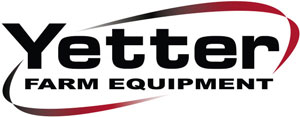Strip-till an asset in dry years
Paul Hamann has found that it pays to be creative when planting strip-till corn-on-corn. By constructing his own strip-till bar and fertilizer cart with his son and brother, he estimates he saved several thousand dollars.
By redesigning and shortening a used ridge-till cultivator bar, Paul was able to reduce the tool in weight and length for use on his small farm. He outfitted the bar with Yetter 2984 Maverick™ HR Plus® units, and then mounted the bar on a caddy he found in Nebraska. To complete the setup, he obtained a 12,000-pound Montag fertilizer cart, built a frame, and attached that to the caddy as well.
"We were worried that we would have to make modifications, but 1,000 acres later, it’s proven it actually works," said Paul.
Like many in southeastern Minnesota, Paul’s cattle graze in his corn stalks in the fall, so he does spring strip-tilling. The Mavericks help him get the job done in time. He also used the tool on soybeans, and even in his neighbors’ alfalfa field, building a berm and putting down fertilizer.
"It’s a very good tool, and strip-till is a real asset in dry years," said Paul. "Residue and placement of the fertilizer is extremely crucial. We deposit fertilizer in the berm below the root zone, which enhances the roots and provides stimulus for the roots to go down to find the fertilizer and moisture. I’ve been able to see the difference between strip-tilled and non-strip-tilled fields."




